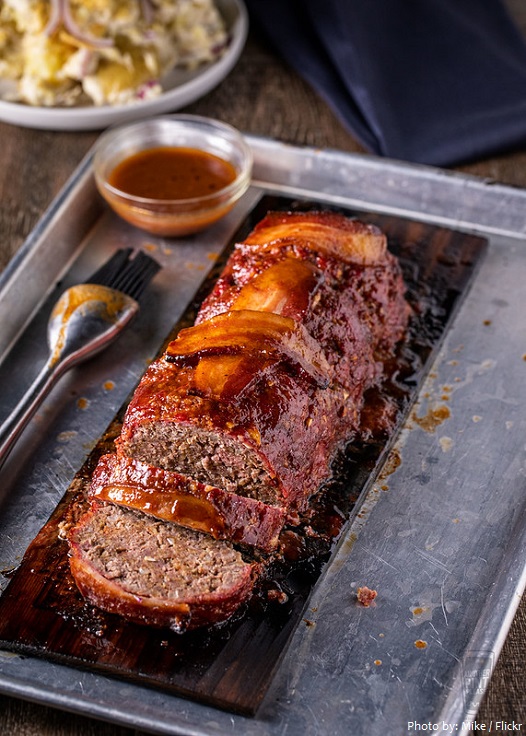
Meatloaf is a dish of ground meat that has been combined with other ingredients and formed into the shape of a loaf, then baked or smoked.
It is the epitome of an all-American comfort food.
Meatloaf is usually made with ground beef, although ground lamb, pork, veal, venison, poultry and seafood are also used, sometimes in combination. Vegetarian adaptations of meatloaf may use imitation meat or pulses.
A meat is mixed with seasonings like onions, herbs, or ketchup, bound with eggs or breadcrumbs, formed into a loaf shape and then baked.
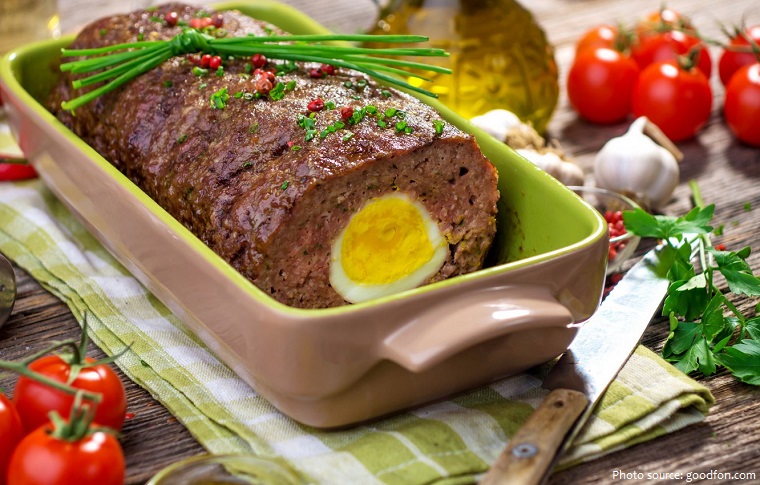
After meatloaf is baked for around forty minutes, it is usually topped with some sort of sauce, usually tomato. Other variations top meatloaf with brown gravy or barbeque sauce.
The cooked meatloaf can be sliced like a loaf of bread to make individual portions. It can easily become dry – therefore, various techniques exist to keep the dish moist, like mixing in breadcrumbs and egg, covering it with sauce, wrapping it, or using moisture-enhancing ingredients in the mixture, such as filling it with fatty meats, rich cheeses, or vegetables.
Meatloaf of minced meat was mentioned in the Roman cookery collection Apicius as early as the 5th century. The recipe includes a primitive recipe for meat, bread and wine patties that used local herbs and spices to flavour the meat before baking. However, unlike contemporary meatloafs, the Roman recipe called for cooked animal brains. It’s not surprising that a few adjustments have been made to the dish over the years.
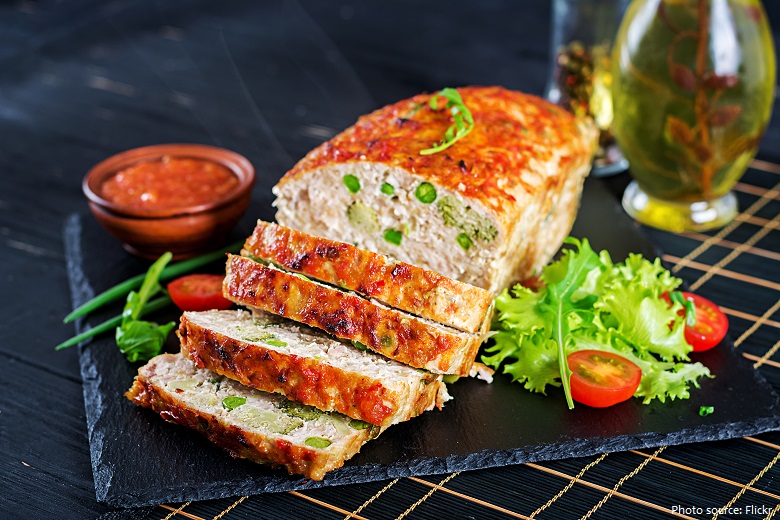
After its introduction in Ancient Rome, the meatloaf spread to all corners of Europe. While many countries produced their own variants on the dish, it was in Germany and Scandinavia that the recipe really found its true calling. In Sweden, meatloaf became known as köttfärslimpa, and was often served with either mashed or boiled potatoes, whereas the Germans would often stuff their variant with hard boiled eggs.
American meatloaf has its origins in scrapple, a mixture of ground pork and cornmeal served by German-Americans in Pennsylvania since colonial times.
The first modern American meatloaf recipe, consisting of chopped beef, salt, pepper, onions, milk-soaked bread and eggs first appeared in 1870s. However, instead of being the dinner classic we know today, it was originally meant to be a breakfast option.

Nadia Arumugam of The Atlantic reported that the word meatloaf first appeared in print in the United States in 1899.
During the Great Depression, cooking meatloaf was a way for families to stretch the food budget by using an inexpensive type of meat and leftover ingredients. Along with spices, it was popular to add cereal grains, bread or saltine crackers to the meatloaf to add bulk and stretch the meat. This tradition of additions still lives on, but with new goals: primarily, producing a lower-fat dish with superior binding and consistency.
In the 1940s, World War II rationing spawned meat-free loaves, whereas postwar creativity in the 1950s and ’60s produced the likes of Bacon-Dill Meatloaf and Spicy Peach Loaf (Good Housekeeping Cook Book, 1955). In the 1970s and ’80s, veal, pork, and beef “meatloaf mix” came into vogue, elevating the dish to dinner party-worthy status. In the 1990s, restaurateurs marketed upscale versions, and today, innovations continue as loaves are stuffed, wrapped, or laced with international flavors.
The Austrian version of meatloaf is called Faschierter Braten. Most of the time it is not filled (e.g., in Germany), but it is wrapped in ham before baking it. Often it is served with mashed potatoes (when warm), or with Cumberland sauce (when cold).
The Belgian version of meatloaf is called vleesbrood – however, fricandon is also used to refer to it in Dutch. In French, it is called pain de viande. It is usually served warm and can then be served with various sauces, but can also be eaten cold with a loaf of bread.
Danish meatloaf is called forloren hare or farsbrød and is usually made from a mixture of ground pork and beef with strips of bacon or cubed bacon on top. It is served with boiled or mashed potatoes and brown gravy sweetened with red currant jam.
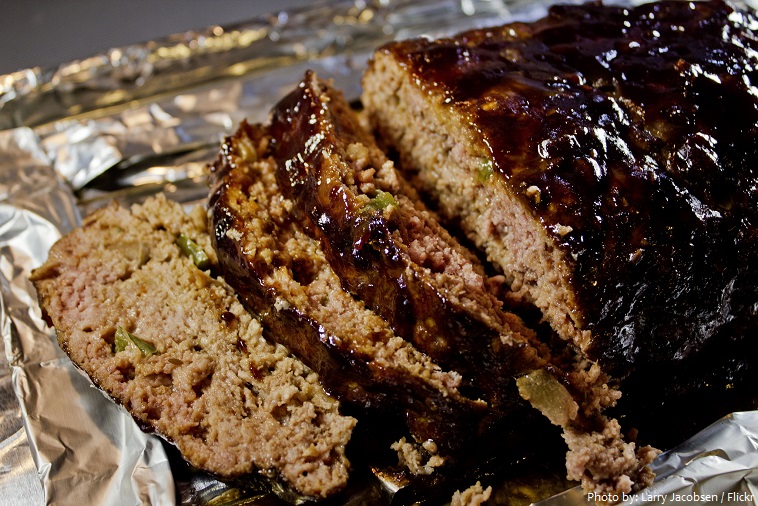
The Dutch version of meatloaf is called gehaktbrood and can be eaten warm or cold. Slavink is sometimes thought of as a small meatloaf, though it is pan-fried.
Swedish meatloaf is called köttfärslimpa and is usually made from a mixture of ground pork and beef. It is served with boiled or mashed potatoes, brown sauce gravy, often made from the meat juice that comes from cooking the meatloaf, and lingonberry jam. It is also used thinly sliced as a spread on sandwiches.
Finnish meatloaf is called lihamureke. It is entirely based on the basic meatball recipe. The only spices used are salt and pepper. It is not customary to stuff lihamureke with anything. The usual side dish is
mashed potatoes, and lihamureke is usually served with brown sauce.
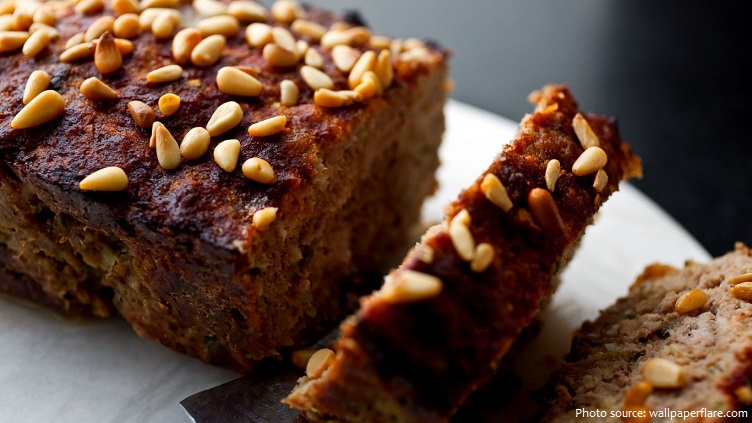
German meatloaf is called Hackbraten, Faschierter Braten or Falscher Hase. In some regions it often has boiled eggs inside. Another version of German “meatloaf” is Leberkase.
In the UK there are regional pork meatloaf dishes known as haslet, which can be eaten cold or hot.
In the Czech Republic, meatloaf is referred to as sekaná. It is optional to put hard boiled eggs, gherkins, or wienerwurst inside.
The largest meatloaf weighed 3,118 kg (6,874.01 lb) and was baked by a team led by Rudolf Angele (Germany) in Walpertshofen, Germany, on 2 August 2009. The Leberkäse, a meatloaf traditional to Germany, measured 15.4 m (50 ft 6.24 in) long and 1.64 m (5 ft 4.56 in) wide, and required a special oven to be built around it for cooking. The entire Leberkäse was distributed and eaten at the measuring and weighing event.
